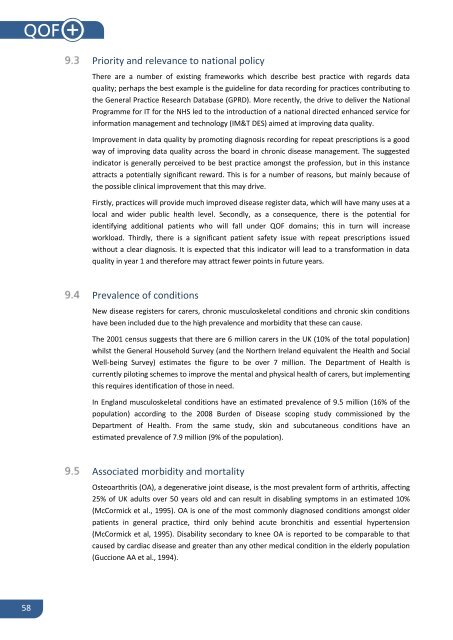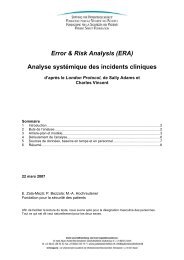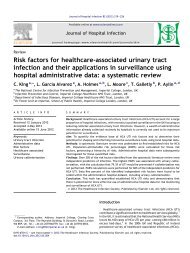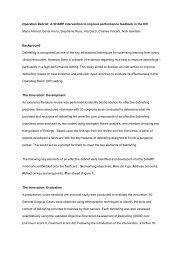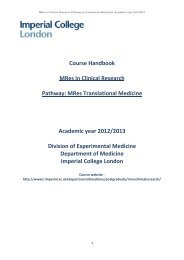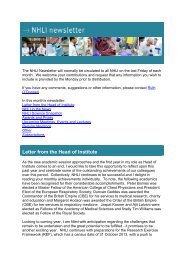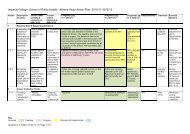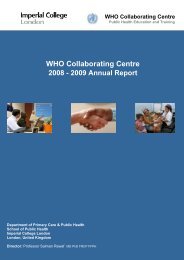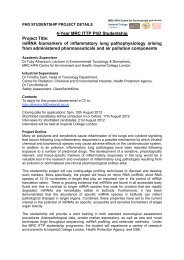QOF Plus Year 1 - Imperial College London
QOF Plus Year 1 - Imperial College London
QOF Plus Year 1 - Imperial College London
You also want an ePaper? Increase the reach of your titles
YUMPU automatically turns print PDFs into web optimized ePapers that Google loves.
Priority and relevance to national policyThere are a number of existing frameworks which describe best practice with regards dataquality; perhaps the best example is the guideline for data recording for practices contributing tothe General Practice Research Database (GPRD). More recently, the drive to deliver the NationalProgramme for IT for the NHS led to the introduction of a national directed enhanced service forinformation management and technology (IM&T DES) aimed at improving data quality.Improvement in data quality by promoting diagnosis recording for repeat prescriptions is a goodway of improving data quality across the board in chronic disease management. The suggestedindicator is generally perceived to be best practice amongst the profession, but in this instanceattracts a potentially significant reward. This is for a number of reasons, but mainly because ofthe possible clinical improvement that this may drive.Firstly, practices will provide much improved disease register data, which will have many uses at alocal and wider public health level. Secondly, as a consequence, there is the potential foridentifying additional patients who will fall under <strong>QOF</strong> domains; this in turn will increaseworkload. Thirdly, there is a significant patient safety issue with repeat prescriptions issuedwithout a clear diagnosis. It is expected that this indicator will lead to a transformation in dataquality in year 1 and therefore may attract fewer points in future years.Prevalence of conditionsNew disease registers for carers, chronic musculoskeletal conditions and chronic skin conditionshave been included due to the high prevalence and morbidity that these can cause.The 2001 census suggests that there are 6 million carers in the UK (10% of the total population)whilst the General Household Survey (and the Northern Ireland equivalent the Health and SocialWell-being Survey) estimates the figure to be over 7 million. The Department of Health iscurrently piloting schemes to improve the mental and physical health of carers, but implementingthis requires identification of those in need.In England musculoskeletal conditions have an estimated prevalence of 9.5 million (16% of thepopulation) according to the 2008 Burden of Disease scoping study commissioned by theDepartment of Health. From the same study, skin and subcutaneous conditions have anestimated prevalence of 7.9 million (9% of the population).Associated morbidity and mortalityOsteoarthritis (OA), a degenerative joint disease, is the most prevalent form of arthritis, affecting25% of UK adults over 50 years old and can result in disabling symptoms in an estimated 10%(McCormick et al., 1995). OA is one of the most commonly diagnosed conditions amongst olderpatients in general practice, third only behind acute bronchitis and essential hypertension(McCormick et al, 1995). Disability secondary to knee OA is reported to be comparable to thatcaused by cardiac disease and greater than any other medical condition in the elderly population(Guccione AA et al., 1994).58


